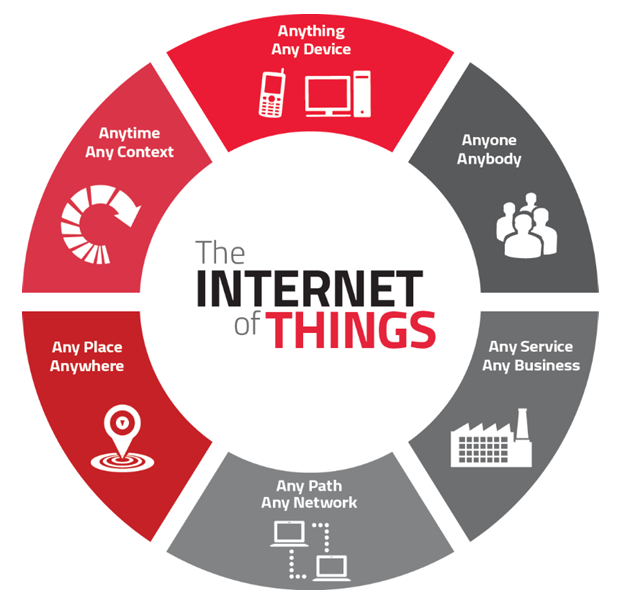According to Cisco, currently there are 10 billion things – phones, PCs, things – connected to the Internet. That is merely 600ths of one percent of the actual devices and things that exist right now. There are over one trillion devices out there right this very minute that are not talking to the Internet – but soon enough they will be.
Kevin Ashton, cofounder and executive director of the Auto-ID Center at MIT, first men-tioned the Internet of Things in a presentation he made to Procter & Gamble in 1999. Here’s how Ashton explains the potential of the Internet of Things: “Today computers -- and, therefore, the Internet -- are almost wholly dependent on human beings for information.
Nearly all of the roughly 50 petabytes (a petabyte is 1,024terabytes) of data available on the Internet were first captured and created by human beings by typing, pressing a record button, taking a digital picture or scanning a bar code. The problem is, people have limited time, attention and accuracy -- all of which means they are not very good at capturing data about things in the real world.
If we had computers that knew everything there was to know about things -- using data they gathered without any help from us -- we would be able to track and count everything and greatly reduce waste, loss and cost. We would know when things needed replacing, repairing or recalling and whether they were fresh or past their best.”

Convergences depend heavily on the ability to move and access data
The broadband divide could prove to be a real hampering force to the internet of things movement that is gaining speed today. Cloud, mobility, big data are all converging and making a seamless network, but the success of this convergence de-pends heavily on the ability to actually move and access the data. And considering that millions of additional devices (some of which are just sensors) will enter the equation means its time for further investment and quick. According to the CIO Sur-vey, organizations are in a prime position to innovate and make significant changes.
Connect Any Thing Over Any Network
The Internet of Things (IoT) is a computing concept that describes a future where everyday physical objects will be connected to the Internet and be able to identify themselves to other devices. It is significant because an object that can represent itself digitally becomes something greater than the object by itself. No longer does the object relate just to you, but is now connected to surrounding objects and database data. When many objects act in unison, they are known as having "ambient intelligence."
IoT Model is focusing more on Applications , Products & Data
In other words, as the physical and digital worlds integrate more closely with each other, and the number of connected devices is predicted to reach 25 billion by 2015, the IoT will enhance and evolve our ability to manage and process information . It’s a more context-oriented world, because there is better data. First thing in a new technology, people do all the obvious things that look like the old market, but more efficiently. In the Internet, GNN had web ads like old newspaper ads. Later there was Google search, which was a different way of doing advertising, by focusing more on data. Now we’ve got social search, social networks. The business model moves to something that is more native to the technology. Uber is an early IoT company. Other businesses will pop up that do more native things .Much of what is available are components that require highly specialized knowledge and skills to make use of.
Create an Impact Throughout the World
The Internet of Things and big data, can also impact society at a much higher level. By effecting better decision making through a better understanding of data, we can tackle socioeconomic issues like poverty and disease, education, and quality of life around the world. Before I close, do you know that soccer ball that generates electricity (an awesome invention, btw)? Uncharted Play company launched their first product, Soccket, which is a soccer ball that when kicked around stores can provide energy that can power small appliances. Amazing but true. The IoT is the next exponent up.
That said, the notion of “The Internet of things” is something unstoppable. More and more devices will become Internet enabled, not less. What needs to be addressed is rock-solid security (logical and physical) combined with privacy laws and policies. At the same time, a comprehensive set of government acts, laws, and regulatory frameworks and technical standards needs to be developed to harness the potential of new models of interactions among the machines and people.
